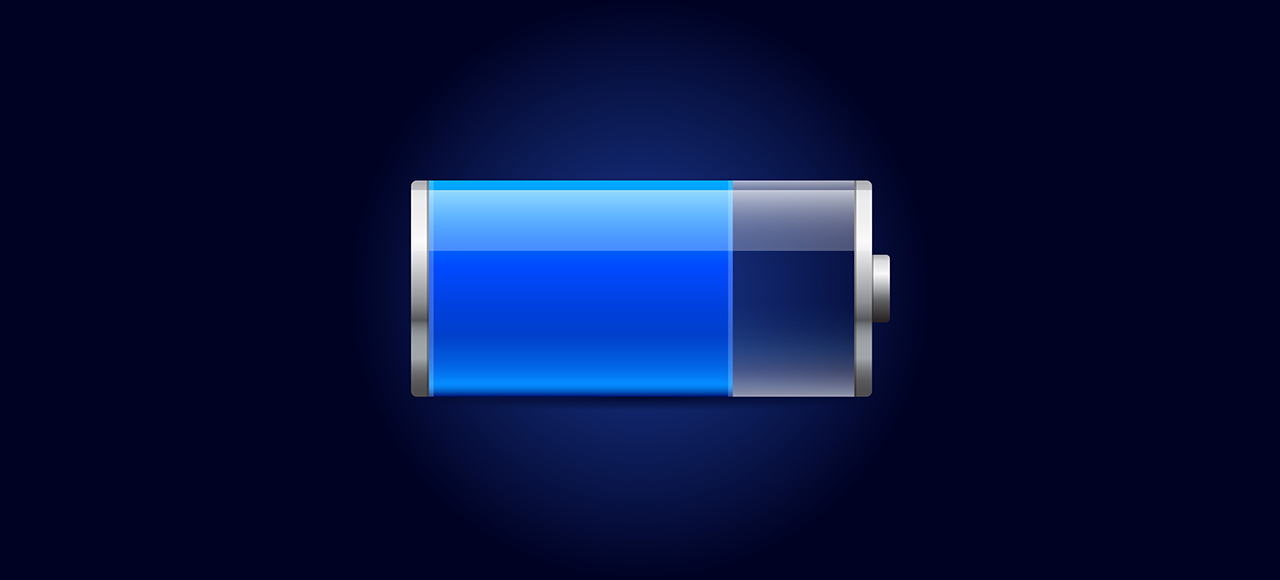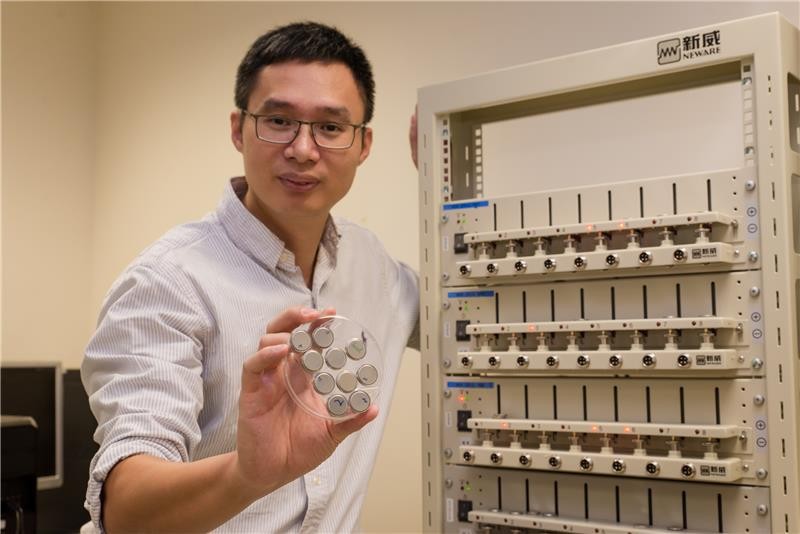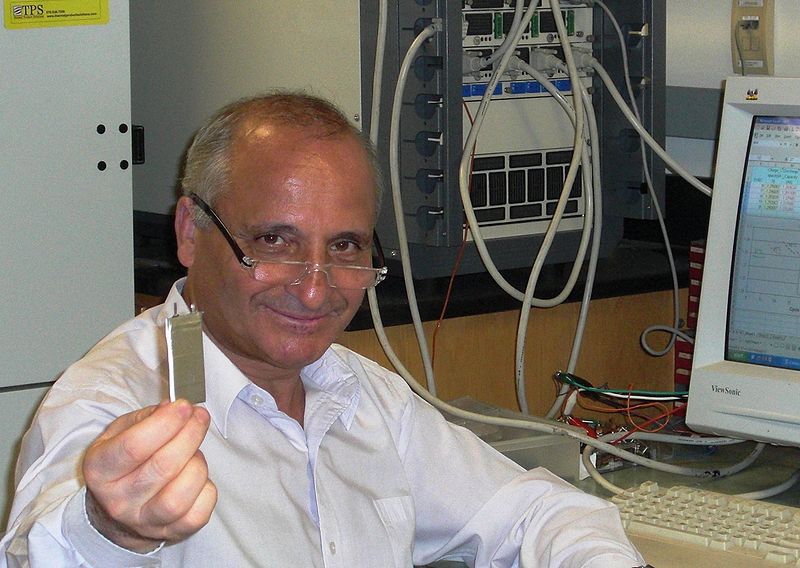New Li-Ion batteries charge up to 70 percent in 2 minutes and last 20 years
The topic of rechargeable batteries and batteries does not let go. The Pronto post about the most fast-charging battery has not yet had time to “cool down” , as scientists from Singapore rolled out a real revolution.

A team of researchers from Nanyang University of Technology (NTU Singapore) has developed a new battery that can charge up to 70 percent in just 2 minutes. And the battery life is more than 20 years.

Pictured is Chen Xiaodong, Tang Yuxing, and graduate student Deng Zhiuang.
This breakthrough has far-reaching consequences, especially in the field of electric vehicles ( if you are too lazy to read further, at this point you can already buy Tesla shares) that suffer from long recharge times (more than 4 hours) and a limited battery life. The developed generation of lithium-ion batteries will allow electric vehicles to recharge 20 times faster than modern batteries. Frequent battery replacement will also be a thing of the past. The new battery will be able to withstand more than 10,000 charge cycles - 20 times more than the 500 cycles of today's batteries.

In the photo, Chen Xiaodong is the leader of a team of scientists who discovered a new technology for lithium-ion batteries.
The answer to the question “How is this possible?” - in the form of nanostructures.
Singaporean scientists have replaced the traditional graphite used for the anode (negative pole) in lithium-ion batteries with a gel made of titanium dioxide (this material is extremely common and is used, for example, in sunscreens to absorb ultraviolet rays).
Typically, titanium dioxide is in a spherical shape, but scientists from Singapore have developed a simple method to give titanium dioxide particles the shape of tiny nanotubes that are a thousand times thinner than the diameter of a human hair. The shape of the nanostructures is responsible for the rate of chemical reactions taking place in the new battery.
The discovery of the influence of the nanostructure form on the rate of chemical reactions belongs to NTU Singapore Associate Professor Chen Xiaodong. To achieve a breakthrough, a team of four scientists led by Professor Chen took 3 years. Professor Rachid Yazami, who was one of the inventors of the lithium-graphite anode 34 years ago, which is used in most lithium-ion batteries today, marked Professor Chen's invention as the next big leap in battery technology.
“The cost of lithium-ion batteries has dropped significantly and productivity has improved since Sony commercialized this technology in 1991, the market is expanding rapidly towards new applications in electric mobility and energy storage,” says Professor Yazami.

In the photo is Professor Rashid Yazami. In 1980, he invented the technology of graphite electrodes used in modern lithium-ion batteries.
“There is still space for improving technology and one of the key areas is power density - how much energy can be stored in a certain amount of space, which directly relates to the ability to quickly charge. Ideally, battery charging time in electric vehicles should be less than 15 minutes, and Professor Chen’s nanostructured anodes have proven this to be possible. ”
The next step for Professor Chen’s research team will be a grant application to prove the correctness of the grant concept by creating a full-fledged battery prototype. Patented technology has already attracted industry interest.
Battery technology is currently licensed and Chen expects a new generation of quick-charge batteries to enter the mass market within two years. “With our nanotechnology, electric cars will be able to significantly increase the range after only five minutes of charging, which is comparable to the time required to refuel gasoline cars,” Professor Chen added. “Equally important, we can now drastically reduce the waste generated by recycled batteries, as our batteries will last tens of times longer than the current generation of lithium-ion batteries.” The
long battery life also means drivers can save on battery replacement, which is now around $ 5,000 USD.
Lithium-ion batteries typically use additives to bind cathodes to anodes, which affect the speed at which electrons and ions can transfer to and from batteries. However, the new electrodes bonded with a gel in the form of titanium dioxide nanotubes, Professor Chen’s team eliminates the need for these additives and allows you to pack more energy in the same amount of space.
“The production of this nanotube gel is relatively easy,” Professor Chen added. “Titanium dioxide and sodium hydroxide are mixed and mixed at a certain temperature. Battery manufacturers will easily integrate our new gel into their current manufacturing processes. ”
We look forward to 2016 when the first commercial samples of new batteries are due to appear.
If you have the opportunity, run to buy Tesla shares. They will be the first to benefit from the use of new batteries. Let me remind you that today Tesla solved the problem of fast recharging cars by the fact that the process is an operation to remove a discharged battery and install a charged one, and it takes 90 seconds. Charging from the mains takes more than 5 hours.

A team of researchers from Nanyang University of Technology (NTU Singapore) has developed a new battery that can charge up to 70 percent in just 2 minutes. And the battery life is more than 20 years.

Pictured is Chen Xiaodong, Tang Yuxing, and graduate student Deng Zhiuang.
This breakthrough has far-reaching consequences, especially in the field of electric vehicles ( if you are too lazy to read further, at this point you can already buy Tesla shares) that suffer from long recharge times (more than 4 hours) and a limited battery life. The developed generation of lithium-ion batteries will allow electric vehicles to recharge 20 times faster than modern batteries. Frequent battery replacement will also be a thing of the past. The new battery will be able to withstand more than 10,000 charge cycles - 20 times more than the 500 cycles of today's batteries.

In the photo, Chen Xiaodong is the leader of a team of scientists who discovered a new technology for lithium-ion batteries.
The answer to the question “How is this possible?” - in the form of nanostructures.
Singaporean scientists have replaced the traditional graphite used for the anode (negative pole) in lithium-ion batteries with a gel made of titanium dioxide (this material is extremely common and is used, for example, in sunscreens to absorb ultraviolet rays).
Typically, titanium dioxide is in a spherical shape, but scientists from Singapore have developed a simple method to give titanium dioxide particles the shape of tiny nanotubes that are a thousand times thinner than the diameter of a human hair. The shape of the nanostructures is responsible for the rate of chemical reactions taking place in the new battery.
The discovery of the influence of the nanostructure form on the rate of chemical reactions belongs to NTU Singapore Associate Professor Chen Xiaodong. To achieve a breakthrough, a team of four scientists led by Professor Chen took 3 years. Professor Rachid Yazami, who was one of the inventors of the lithium-graphite anode 34 years ago, which is used in most lithium-ion batteries today, marked Professor Chen's invention as the next big leap in battery technology.
“The cost of lithium-ion batteries has dropped significantly and productivity has improved since Sony commercialized this technology in 1991, the market is expanding rapidly towards new applications in electric mobility and energy storage,” says Professor Yazami.

In the photo is Professor Rashid Yazami. In 1980, he invented the technology of graphite electrodes used in modern lithium-ion batteries.
“There is still space for improving technology and one of the key areas is power density - how much energy can be stored in a certain amount of space, which directly relates to the ability to quickly charge. Ideally, battery charging time in electric vehicles should be less than 15 minutes, and Professor Chen’s nanostructured anodes have proven this to be possible. ”
Commercialization of technology
The next step for Professor Chen’s research team will be a grant application to prove the correctness of the grant concept by creating a full-fledged battery prototype. Patented technology has already attracted industry interest.
Battery technology is currently licensed and Chen expects a new generation of quick-charge batteries to enter the mass market within two years. “With our nanotechnology, electric cars will be able to significantly increase the range after only five minutes of charging, which is comparable to the time required to refuel gasoline cars,” Professor Chen added. “Equally important, we can now drastically reduce the waste generated by recycled batteries, as our batteries will last tens of times longer than the current generation of lithium-ion batteries.” The
long battery life also means drivers can save on battery replacement, which is now around $ 5,000 USD.
Production
Lithium-ion batteries typically use additives to bind cathodes to anodes, which affect the speed at which electrons and ions can transfer to and from batteries. However, the new electrodes bonded with a gel in the form of titanium dioxide nanotubes, Professor Chen’s team eliminates the need for these additives and allows you to pack more energy in the same amount of space.
“The production of this nanotube gel is relatively easy,” Professor Chen added. “Titanium dioxide and sodium hydroxide are mixed and mixed at a certain temperature. Battery manufacturers will easily integrate our new gel into their current manufacturing processes. ”
We look forward to 2016 when the first commercial samples of new batteries are due to appear.
If you have the opportunity, run to buy Tesla shares. They will be the first to benefit from the use of new batteries. Let me remind you that today Tesla solved the problem of fast recharging cars by the fact that the process is an operation to remove a discharged battery and install a charged one, and it takes 90 seconds. Charging from the mains takes more than 5 hours.
